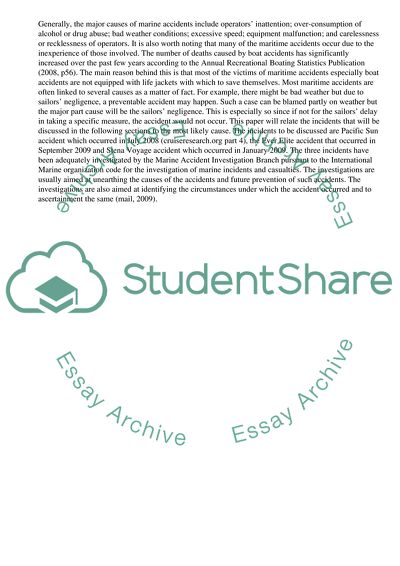Cite this document
(Marine Accidents and Incidences Essay Example | Topics and Well Written Essays - 4500 words, n.d.)
Marine Accidents and Incidences Essay Example | Topics and Well Written Essays - 4500 words. Retrieved from https://studentshare.org/business/1740567-by-analysing-a-number-of-recent-maritime-incidents-discuss-whether-the-incidents-were-caused-because-of-failures
Marine Accidents and Incidences Essay Example | Topics and Well Written Essays - 4500 words. Retrieved from https://studentshare.org/business/1740567-by-analysing-a-number-of-recent-maritime-incidents-discuss-whether-the-incidents-were-caused-because-of-failures
(Marine Accidents and Incidences Essay Example | Topics and Well Written Essays - 4500 Words)
Marine Accidents and Incidences Essay Example | Topics and Well Written Essays - 4500 Words. https://studentshare.org/business/1740567-by-analysing-a-number-of-recent-maritime-incidents-discuss-whether-the-incidents-were-caused-because-of-failures.
Marine Accidents and Incidences Essay Example | Topics and Well Written Essays - 4500 Words. https://studentshare.org/business/1740567-by-analysing-a-number-of-recent-maritime-incidents-discuss-whether-the-incidents-were-caused-because-of-failures.
“Marine Accidents and Incidences Essay Example | Topics and Well Written Essays - 4500 Words”, n.d. https://studentshare.org/business/1740567-by-analysing-a-number-of-recent-maritime-incidents-discuss-whether-the-incidents-were-caused-because-of-failures.


